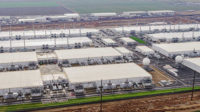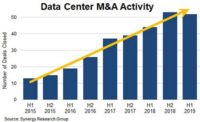Data centers are expected to operate 24/7/365. When critical infrastructure reaches the end of its useful life, data centers become prone to unplanned outages, and equipment replacement becomes critical. There are also instances where upgrades are necessary to increase capacity, consolidate loads, and remediate points of failure. There is also the potential to capture stranded capacity and space and maximize the ability to support IT loads.
While each project involving infrastructure upgrades is different and has its unique set of requirements and challenges, here are 16 ideas to consider during the programming and planning phase for multitenant and enterprise data center infrastructure upgrades.
1) Review the owner’s project requirements (OPR). The OPR should clearly define the overall objectives, goals, and expectations of the project. Detailed interviews between the owner’s stakeholders and the design and construction team are recommended to align expectations through a more thorough understanding of current and future needs, planned initiatives, and interdependencies.
2) Owners can gain valuable insight through validation of their power and cooling requirements. The building management system (BMS) and electrical power monitoring software (EPMS) trend logs, electricity bills, equipment readouts, and more can provide useful information. The past and current usage can be coupled with planned initiatives and deployment models to forecast future requirements.
3) Based on forecasting results, owners can establish milestones where additional capacity needs to be deployed or equipment needs to be replaced to meet project objectives.
4) Engage engineers to identify any major constraints that could pose a challenge to the infrastructure upgrade project through conducting a gap analysis.
5) If the facility has an original master plan that addressed expansion or densification as part of a future phase, review the plan and confirm it is still valid.
6) Review available documentation to get an in-depth understanding of the data center systems. Survey the data center in detail and conduct interviews with the data center’s operators. If there have been outages in the past or there are recurring issues, it is critical that the root cause be identified.
7) For multitenant and enterprise data center owners requiring concurrent maintainability or fault tolerance, identify any points of failure that can impact the data center and review remedial options with the stakeholders.
8) Verify the effectiveness of the data center cooling system if the project scope involves related upgrades. The available cooling capacity cannot be fully utilized if there are deficiencies. Consider a computational fluid dynamics (CFD) analysis to validate the existing conditions and provide recommendations for increasing the effectiveness.
9) Occasionally, there are circumstances that impact the entirety or certain elements of the upgrade project, such as pending mergers and acquisitions, litigation, security requirements, government regulations, or other issues. Adjustments to stakeholder expectations and requirements may be needed.
10) For multitenant data centers, review the impact of upgrades and construction activity on agreements — e.g., service level agreements (SLAs), lease, etc. — between the customer and the provider. There are implications if the agreements are violated, and the potential impact should be reviewed.
11) Review the financial impact of the upgrade project. Utility companies frequently offer incentives if upgrades will lead to reduction in energy usage (kWh) or peak power (kW), and the incentives can partially offset the project cost.
12) For projects that involve an increase in capacity or density, expanding the existing systems and deploying existing technologies already on-site might not be appropriate in certain situations. Review options and alternates that best meet the data center owner’s project objectives. Criteria such as space requirements, structural implications, financial impact (CapEx, OpEx, TCO), potential risks, reliability, time-to-market, commissioning challenges, code impact, and much more need to be considered.
13) Consider involving a preconstruction team (general contractor and subcontractors) to help with pricing, logistical support, construction feasibility, equipment procurement, construction scheduling, development of methods of procedures (MOPs) and standard operating procedures (SOPs), creating safety protocols, and more during the planning phase.
14) The upgrade project also offers an excellent opportunity for the data center facility and operations team to provide input and gain hands-on experience as MOPs/SOPs are developed and implemented in preparation of construction. Their participation during the entire planning phase is highly recommended.
15) It is important for the commissioning agent to be involved during the planning phase. Commissioning systems in a live data center has its own set of challenges, and the commissioning agent needs to develop strategies and provide input to the design team.
16) Construction activity can be intrusive, and there are risks associated with working in a live data center. The risks can be minimized with detailed planning but can never be eliminated. Murphy’s Law can render even the best plan and strategy ineffective. Consider creating contingency plans and fallback options in collaboration with the stakeholders to help mitigate the risks.
By following the thought process and underlying philosophy shared above, upgrades to a live multitenant or enterprise data center can be implemented in a successful manner with little or no impact to its operations.





